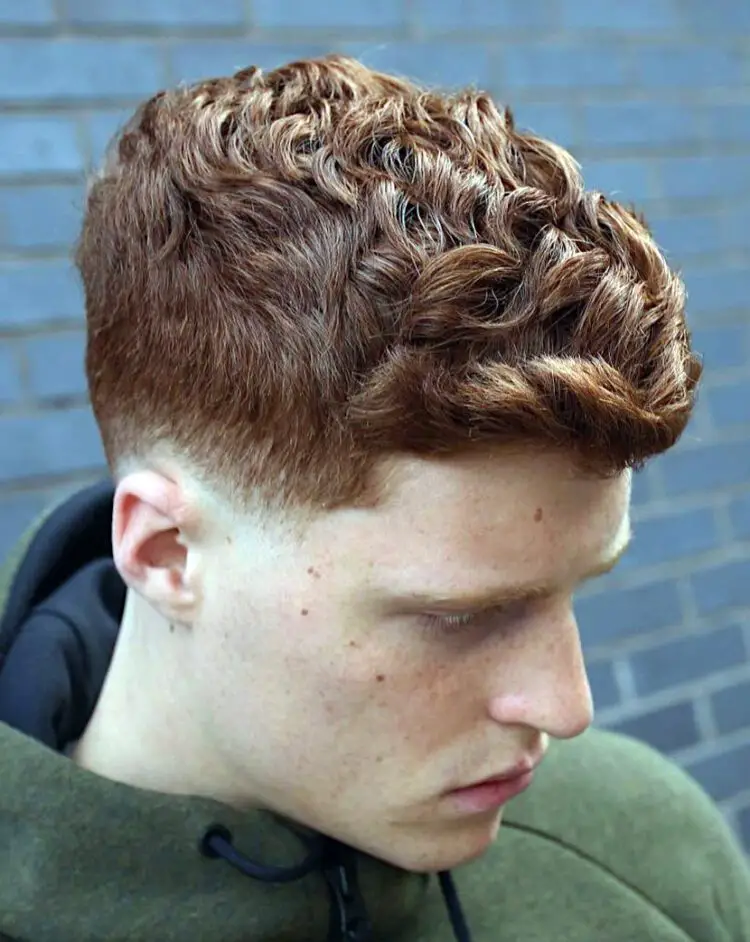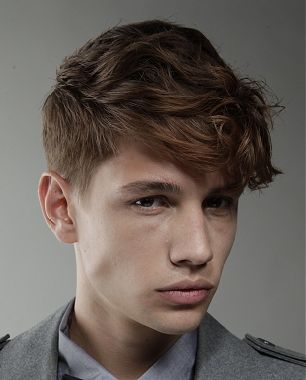The 1970s was an iconic era for men’s hairstyles, characterized by length, texture, and a certain carefree attitude. From shaggy cuts to sleek styles, these vintage looks are making a major comeback. Whether you’re looking to channel your inner rock star or want a sophisticated retro appearance, these 70s-inspired haircuts offer timeless appeal with a modern twist.
1. The Classic Shag

The quintessential 70s haircut, the shag, features layered lengths with textured ends and face-framing pieces. This versatile cut works with both straight and wavy hair, typically falling just below the ears and featuring soft layers throughout. The key to this style is the choppy, feathered effect that creates movement and volume. Perfect for boys with medium to thick hair, the shag requires minimal styling – just a light styling cream and occasional tousling to maintain its effortless appeal.
2. The Bowl Cut

While it might sound dated, the bowl cut was a 70s staple that’s seeing a sophisticated revival. This geometric cut features hair cut straight across at about ear level, creating a uniform length all around. Modern interpretations often incorporate subtle layers or textured ends to soften the look. The style works best with straight, thick hair and can be customized by adjusting the length and adding slight graduation at the neckline.
3. Long Center Part

A signature look of the era, the long center part embodies the free-spirited nature of the 70s. Hair is grown past the shoulders and parted directly down the middle, creating a symmetrical frame for the face. This style requires healthy, well-maintained hair and regular trims to prevent split ends. Use a smoothing serum to control frizz and maintain shine.
4. The Feathered Wings

Popularized by teenage heartthrobs, the feathered wings hairstyle features medium-length hair swept away from the face and layered to create a wing-like effect at the sides. The key is cutting layers that can be blown back and outward, creating that distinctive feathered look. Regular blow-drying and a round brush are essential for achieving this iconic style.
5. The Afro

The 70s saw the rise of the Afro as a powerful symbol of natural beauty. This style celebrates natural texture, with hair grown out into a rounded shape. The key to a perfect Afro is maintaining moisture, regular trimming to maintain shape, and using appropriate tools like wide-toothed combs and pick combs for styling.
6. The Curtain Cut

Similar to the center part but typically shorter, the curtain cut features hair parted down the middle with slightly shorter layers framing the face. This style works well with both straight and wavy hair textures and can be adjusted in length to suit different face shapes. Use a lightweight styling product to enhance natural texture.
7. The Mullet

Love it or hate it, the mullet was a defining 70s style featuring shorter hair on top and sides with length at the back. Modern interpretations often incorporate more subtle graduation and texturizing to create a more wearable version. The key is maintaining the contrast between the top and back lengths while ensuring the transition is smooth.
8. The Pageboy

A longer version of the bowl cut, the pageboy features hair cut to one length, typically just above or below the shoulders, with the ends curved under. This sophisticated style requires straight or straightened hair and regular maintenance to keep the ends neat. A round brush and blow dryer are essential tools for styling.
9. The Shaggy Surfer

This laid-back style features medium to long layers with plenty of texture, inspired by California beach culture. The cut works especially well with naturally wavy hair and can be enhanced with sea salt spray for that perfect beach-tousled look. Length typically falls between the chin and shoulders.
10. The Mod Cut

A shorter option popular in the early 70s, the mod cut features precisely cut geometric shapes with clean lines. Hair is typically shorter at the back and sides with more length on top, often styled forward or to the side. This cut requires regular maintenance to maintain its sharp lines.
11. The Long Layer Cut

A versatile style featuring long layers throughout, this cut creates movement while maintaining length. Layers are cut to enhance natural texture and can be styled straight or wavy. Regular trims are essential to prevent split ends and maintain the layer graduation.
12. The Swept Back Flow

This sophisticated style features medium-length hair swept back from the forehead, often with slight volume at the crown. The cut requires enough length to brush back and usually incorporates layers for movement. Styling products and blow-drying techniques are crucial for maintaining the sweep.
13. The Natural Curls

Embracing natural texture was a hallmark of 70s style, and this cut celebrates natural curls at medium length. The key is cutting layers that enhance curl pattern while maintaining shape. Proper moisturizing products and curl-enhancing techniques are essential.
14. The Rock Star Shag

A more dramatic version of the classic shag, this cut features choppy layers throughout with extra texture and volume. Often incorporating bangs and face-framing pieces, this style embodies the rock and roll spirit of the 70s. Texturizing products help enhance the deliberately messy look.
15. The Textured Crop

A shorter option featuring textured layers on top with tapered sides, this style offers a more controlled look while maintaining 70s flair. The cut works well with various hair textures and can be styled with minimal product for an effortless appearance.
16. The Long Fringe

This style features longer hair with emphasis on the fringe, which can be worn straight across or swept to the side. The rest of the hair is cut in layers to blend with the fringe length. Regular trims help maintain the fringe shape and prevent it from becoming too heavy.
17. The Hippie Long

Simple yet striking, this style features long hair grown past the shoulders with minimal layering. The key is maintaining healthy hair through regular trims and proper care. Can be worn parted in the middle or side for variety.
18. The Feathered Bob

A shorter variation of the feathered style, this cut features hair cut to chin length with layers feathered away from the face. The style works well with straight to slightly wavy hair and requires regular blow-drying to maintain the feathered effect.
19. The Grown-Out Crop

This low-maintenance style features hair grown out from a shorter cut, creating natural texture and movement. Length typically falls around the ears with subtle layering throughout. Minimal styling is required, making it perfect for boys who prefer a casual look.
20. The Textured Mop

Similar to the Beatles’ early style but with more 70s texture, this cut features longer hair on top that can fall forward or be swept to the side. The back and sides are kept slightly shorter but still maintain length. The style works well with straight to wavy hair and can be enhanced with light styling products.
Styling Tips for 70s Haircuts:
- Use appropriate products for your hair texture
- Invest in quality styling tools like round brushes and blow dryers
- Regular trims are essential for maintaining shape
- Consider your face shape when choosing a style
- Embrace natural texture whenever possible
- Use heat protectant products when styling with hot tools
Maintenance Requirements:
- Schedule regular trims every 6-8 weeks
- Use proper shampooing and conditioning products
- Protect hair while sleeping with a silk or satin pillowcase
- Avoid over-washing which can strip natural oils
- Deep condition regularly, especially for longer styles
- Use appropriate styling products in moderation
These 70s-inspired haircuts offer a perfect blend of vintage charm and modern style. Whether you’re looking for a bold statement or a subtle nod to the era, there’s a 70s haircut that can be adapted to suit your style and hair type. Remember, the key to pulling off any of these looks is confidence and proper maintenance.
